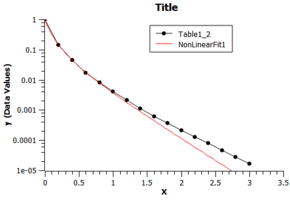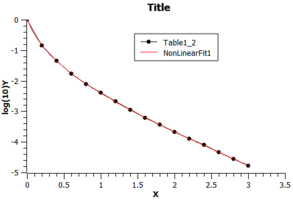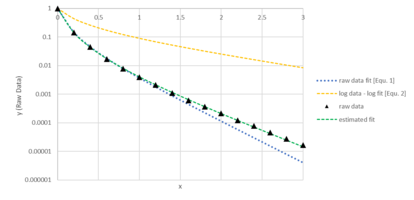Melisandre
New member
- Joined
- Sep 8, 2023
- Messages
- 4
Hi all,
I have a non-linear equation I would like to fit to some data points, however given the range of resulting data (y) values the raw fit to this equation is skewed. However, by transforming both sides of the equation by log[10], the equation fits but the resulting fitting coefficients cannot be directly applied to data that is not log transformed.
The original equation is as follows, with independent coefficients a, b and g:
y = ((1+(b/a))*exp(a*g*x)-(b/a))^(-1/g).
taking log[10] of both sides:
log(y) = log(((1+(b/a))*exp(a*g*x)-(b/a))^(-1/g))
As mentioned, this log transformation of the data and equation provides a good fit, though the calculated coefficients a, b and g need to be modified somehow so they can be applied to the original data/equation.
How is this achieved? I'm really hoping someone can shed some light on this problem.
Many thanks,
M
I have a non-linear equation I would like to fit to some data points, however given the range of resulting data (y) values the raw fit to this equation is skewed. However, by transforming both sides of the equation by log[10], the equation fits but the resulting fitting coefficients cannot be directly applied to data that is not log transformed.
The original equation is as follows, with independent coefficients a, b and g:
y = ((1+(b/a))*exp(a*g*x)-(b/a))^(-1/g).
taking log[10] of both sides:
log(y) = log(((1+(b/a))*exp(a*g*x)-(b/a))^(-1/g))
As mentioned, this log transformation of the data and equation provides a good fit, though the calculated coefficients a, b and g need to be modified somehow so they can be applied to the original data/equation.
How is this achieved? I'm really hoping someone can shed some light on this problem.
Many thanks,
M




